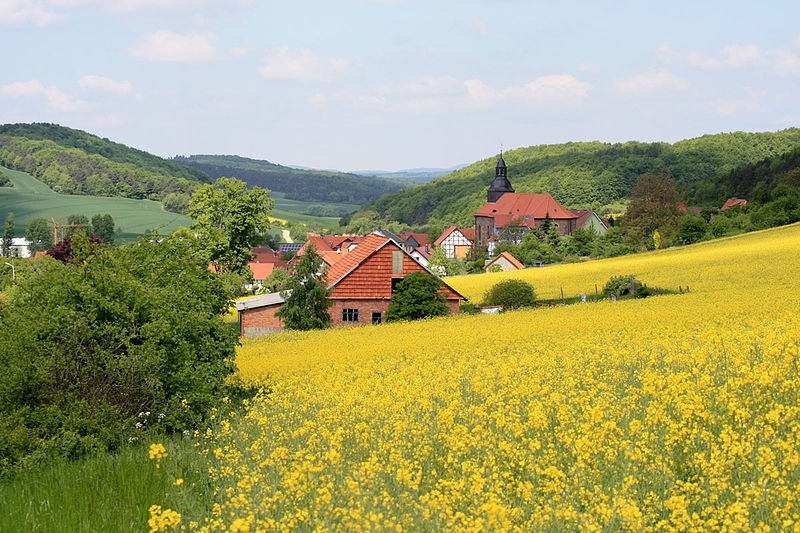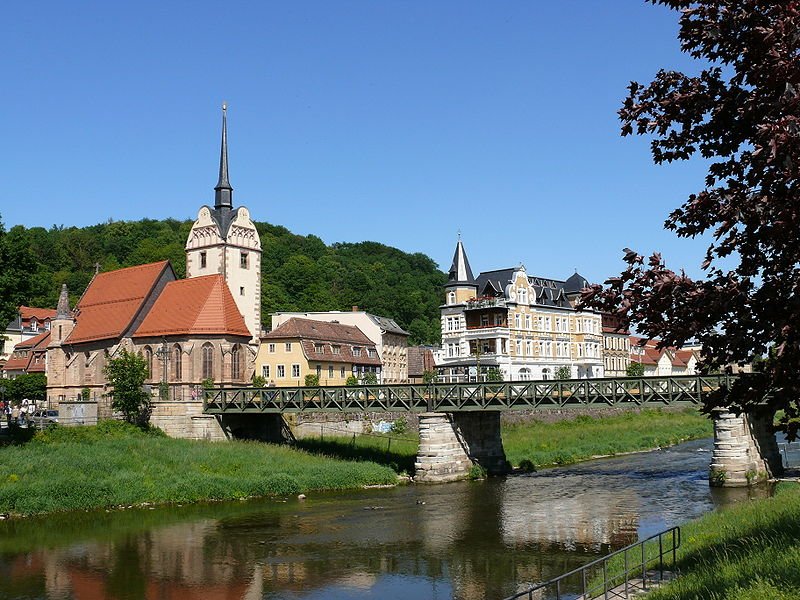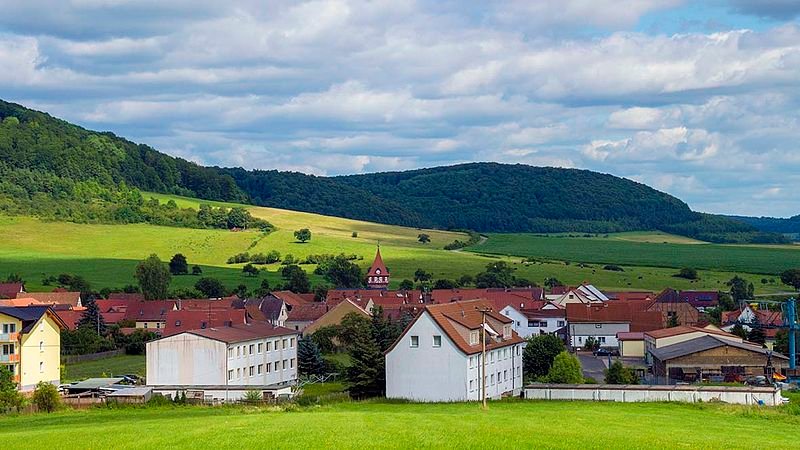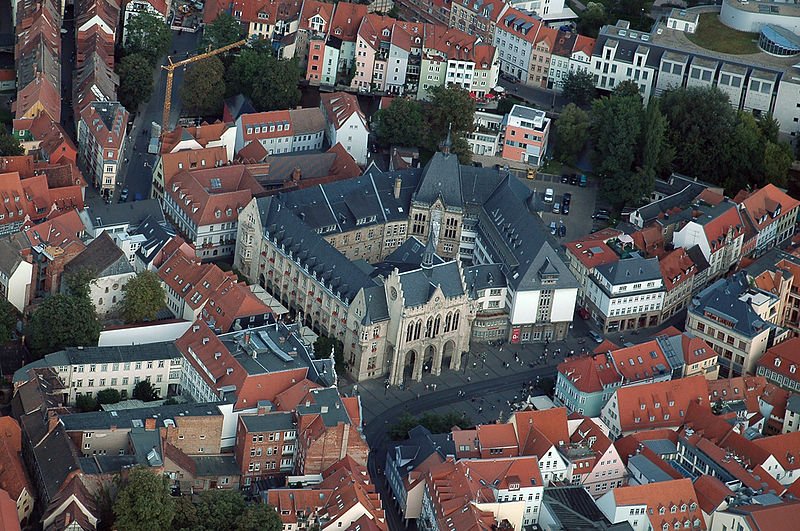 Gerbershausen, Thuringia
Gerbershausen, ThuringiaSource: https://commons.wikimedia.org/wiki/File:Gerbershausen_Rapsfeld.jpg
Author: Tobi78

Thuringia is a state of the Federal Republic of Germany. Known in German as Freistaat Thüringen, it was one of the states of the former East Germany. Thuringia shares a border with Lower Saxony to the north, Saxony-Anhalt to the northeast, Saxony to the east, Bavaria to the south and Hesse to the west.
 St Marienkirche in Gera-Untermhaus, Thuringia
St Marienkirche in Gera-Untermhaus, ThuringiaSource: https://commons.wikimedia.org/wiki/File:Gera_Untermhaus_St._Marienkirche_%282007%29.JPG
Author: Zacke82

Thuringia is located in central Germany. A densely forested state, it is often called the Green Heart of Germany. It covers 16,171 sq km (6,243 sq mi) and has a population of 2.3 million people. Its capital is Erfurt. It observes the Central European Time, which is an hour ahead of Coordinated Universal Time (UTC+1) and two hours ahead during Daylight Saving Time in summer.
Today Thuringia has become a popular destination for nature recreation and winter spots. The state has produced many athletes in winter sports, and in the last two Winter Olympics, athletes from Thuringia won half the gold medals received by Germany.
Thuringia is divided into 17 rural districts and six urban district. The main geographical feature of Thuringia is the Thuringian Forest, which covers much of the southwestern part of the state and merges into the Harz Mountains.
 Stadtlingen, Thuringia
Stadtlingen, ThuringiaSource: https://commons.wikimedia.org/wiki/File:StedtlingenKaserne.jpg
Author: Togodumnus

Thuringia traces its history to a Germanic tribe called Thuringii, which inhabited the area as early as AD 280. Thuringia was later ruled by the Franks and subsequently was absorbed into the Holy Roman Empire. Protestant Reformation led to the Catholic faith being abolished in 1520. Today 25% are still members of the Evangelical Church and 8% of the Catholic church. Having been ruled by the Communist for so long, many of the people in Thuringia no longer practise religion. The border of Thuringia has shifted many times through its long history. Thuringia was made part of the German Confederation in 1815. In 1871, it became part of the German Empire. Following World War I, a new state of Thuringia was formed. It came under Soviet occupation following World War II, which led to it being a state of the former German Democratic Republic from 1952 until 1990, when reunification brought it into the Federal Republic of Germany.
Visiting Thuringia
There are high-speed ICE trains connecting Erfurt with major cities in Germany including Berlin, Düsseldorf, Leipzig, Dresden and Frankfurt. Erfurt Town Hall
Erfurt Town HallSource: https://commons.wikimedia.org/wiki/File:Luftbild_Erfurter_Rathaus.jpg
Author: TomKidd

Cities in Thuringia
- Erfurt - state capital
- Altenburg
- Eisenach
- Gera
- Gotha
- Jena
- Meiningen
- Mühlhausen
- Nordhausen
- Rudolstadt
- Suhl
- Weimar
World Heritage Site in Thuringia
 Latest updates on Penang Travel Tips
Latest updates on Penang Travel Tips
 Discover with Timothy YouTube Channel
Discover with Timothy YouTube Channel
 PG Food Channel
PG Food Channel
 Learn Penang Hokkien YouTube Channel
Learn Penang Hokkien YouTube Channel
 SojiMart Videos
SojiMart Videos
Latest from Discover with Timothy: Gurney Bay - what to see and do there
About this website

Hello and thanks for reading this page. My name is Timothy and my hobby is in describing places so that I can share the information with the general public. My website has become the go to site for a lot of people including students, teachers, journalists, etc. whenever they seek information on places, particularly those in Malaysia and Singapore. I have been doing this since 5 January 2003, for over twenty years already. You can read about me at Discover Timothy. By now I have compiled information on thousands of places, mostly in Peninsular Malaysia and Singapore, and I continue to add more almost every day. My goal is to describe every street in every town in Malaysia and Singapore.
Robbie's Roadmap
- Episode 1: Robbie's Journey to Financial Freedom
- Episode 2: Lost in America
- Episode 3: The Value of Money
- Episode 4: The Mentor
- Episode 5: The Thing that Makes Money
- Episode 6: The walk with a Billionaire
- Episode 7: The Financial Freedom Awakening
- Episode 8: Meet Mr Washington
- Episode 9: The Pizzeria Incident
Copyright © 2003-2024 Timothy Tye. All Rights Reserved.


 Go Back
Go Back